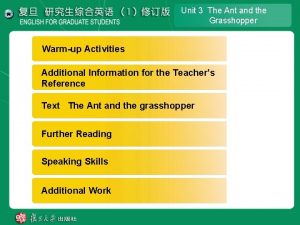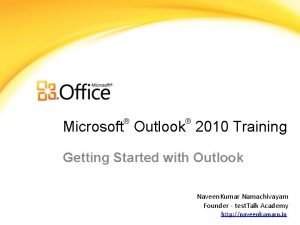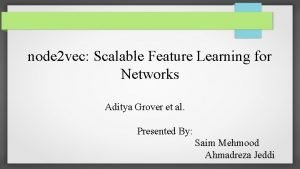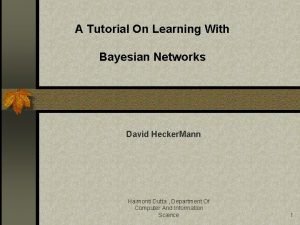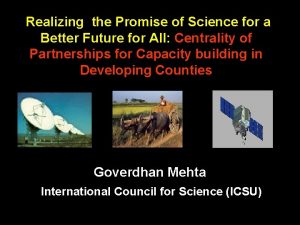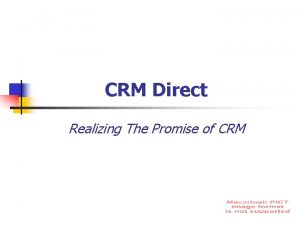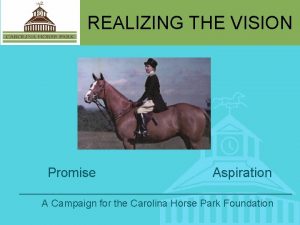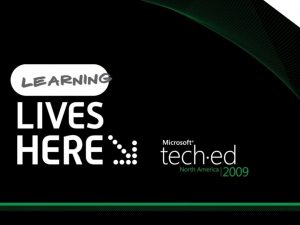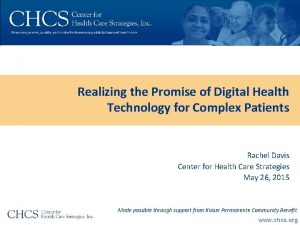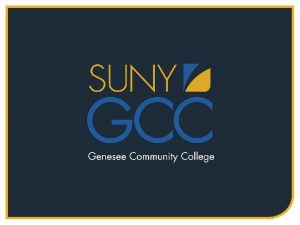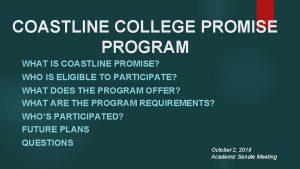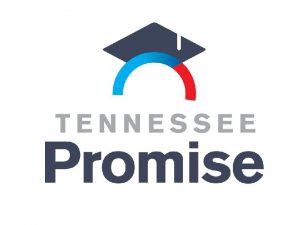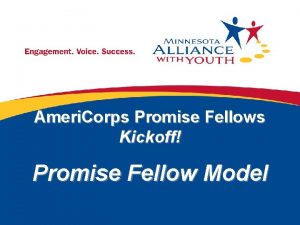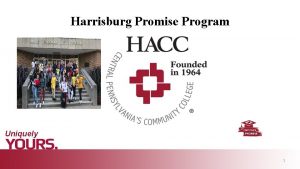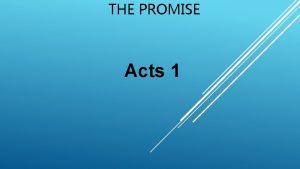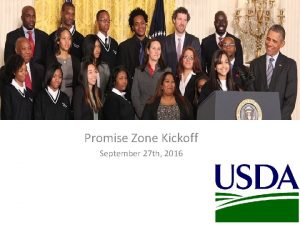Realizing the Promise of Learning Networks Getting to

























- Slides: 25

Realizing the Promise of Learning Networks: Getting to Real Results Rorie Fitzpatrick, NCSI / West. Ed Meg Kamman, CEEDAR / University of Florida Megan Vinh, Da. Sy & ECTA / UNC-Chapel Hill OSEP Project Directors’ Conference | July 2018

A look at the Research Effective Networked Improvement Communities (NICs) are: Focused on a well-specified aim Guided by a deep understanding of the problem, the system that produces it, and a theory of improvement relative to it Disciplined by the rigor of improvement science Coordinated to accelerate the development, testing, and refinement of interventions and their effective integration into practice across varied educational contexts. Learning to Improve: How America's Schools Can Get Better at Getting Better, edited by Bryk. S. , Gomez L. M. , Grunow A. , and Le. Mahieu P. Harvard University Press, Cambridge, MA, 2015. 280 pp. ISBN ‐ 10: 1612507913.

Learning Networks Featured Today

CEEDAR Cross-State Learning Groups 4

ECTA/Da. Sy Cross-State Opportunities 5

NCSI Networked Improvement Communities

Launching, Growing/Sustaining, and Measuring the Impact of Learning Networks Lessons Learned

Launching Learning Networks • Will you use an existing platform or create a new space? Ensuring adequate virtual infrastructure Lessons Learned Identifying common problems of practice • What are burning issues related to your mission? Getting Started • How can you provide assistance to staff leading networks? Planning Supports • What strategies can we use to get started?

Launching Learning Networks: Adequate Virtual Infrastructure • Will you use an existing platform or create a new space? Ensuring adequate virtual infrastructure

Launching Learning Networks: Identifying Common Problems of Practice Affinity groups: • State leads submitted topics based on state interests and needs • Compiled common areas to select 4 groups Identifying common problems of practice • What are burning issues related to your mission? 1. 2. 3. Dyslexia/literacy Licensure/ shortages Data/outcomes for preparation programs • Added two groups in topics the center hopes to push the field in 4. Inclusive Leadership 5. Culturally Responsive Policy and Practice Topical Action Groups: • Selected topics aligned to common state blueprint goals • High Leverage Practices, Inclusive Leadership and Clinical Practice

Launching Learning Networks: Planning Supports • Templates for planning • How can you provide assistance to staff leading networks? Planning Supports • • Scope and sequence Synchronous A-synchronous Engagement strategies

Launching Learning Networks: Getting Started • Initial Activities Getting Started • What strategies can we use to get started? • Building Relationships • Setting Group Norms • Establishing a shared vision and goals

Growing and Sustaining Learning Networks • How will you clarify what participation means? TA Agreements Lessons Learned Align work with ongoing efforts • How will you support alignment of the work with ongoing efforts? Formative evaluation • What “practices” will you use? Capacity Building Practices • What data do you need to collect to ensure the community meets participants needs?

Growing and Sustaining Learning Networks continued • Application process • Participants apply • Selection criteria • Clearly articulate the TA activities and the expectations of participation in the learning network • Cross-state • Individualized action plan • Evaluation expectations • Clearly articulate outcomes Lessons Learned

Growing and Sustaining Learning Networks continued. • How will you support alignment of the work with ongoing efforts? • Ensure cross-state activities are driven by common needs • Action Plans should be based on data and connect with ongoing participant work • Needs to be meaningful Align work with ongoing efforts Lessons Learned

Growing and Sustaining Learning Networks continued. . • Capacity building is key! • What “practices” will you use? Capacity Building Practices Lessons Learned • Mix of cross-state and individualized • TA providers should be using best practices to support participants in building capacity and making progress • Structure activities to maximize participant engagement and learning • All participants bring important knowledge, but may need support in engaging in learning networks

Growing and Sustaining Learning Networks continued… • What data do you need to collect to ensure the community meets participants needs? Formative evaluation Lessons Learned • Gather data on an ongoing basis about the processes used within the learning network • Are people actively engaging and sharing knowledge? • Are people making progress and building capacity? • If not, why not?

Measuring the Impact of Learning Networks Lessons Learned

Measuring Impact | Step 1 • Look to existing evaluation guidance • What does impact mean relative to the TA/PD effort? Define impact Lessons Learned • logic model, theory of action, outcomes chart, etc. … • Get concrete • What does it mean to “succeed” in the TA/PD? • What tangible actions or artifacts will show change? • Be aware of outputs vs outcomes • Did policies, procedures, and/or practices change?

Measuring Impact | Step 2 • What data will show resulting impact? • Data access • Do you have connections with the right sources to access the data that would tell your story? • Data legitimacy • Think about causality; consider inference • Be realistic Determine appropriate measures • Think about grain size and level of impact within pragmatic parameters • Child/student/family impact; systems impcat; incremental benchmarks vs large scale impact • Plan for mixed methods • Qualitative and quantitative outcomes Lessons Learned

Measuring Impact | Step 3 • How can you get the information you need? • Partner among program staff and project evaluators to develop and implement data collection; use data • Coach/explain purpose of impact data to clients so they can give you the kinds of evidence you need • Not fabricating results —giving useful info when it exists • Help staff understand importance of impact data and project’s approaches to capturing / using impact data Get the data • Set expectations up front for data collection • Coordinate data collection to reduce over-burden • Elevate importance of measuring impact • E. g. , Director-level communication about purpose, approach, use of impact data…both internally and externally Lessons Learned

Measuring Impact | Step 4 • Who needs to know about impact and how? Tell the story Lessons Learned • Use your data • • Formative planning Return on investment Annual Performance Reports Stakeholder partnerships • Lead with Qualitative data, bolster with quantitative data to support contextual understanding and nature of the systems change

Let’s Talk! The research… • To what extent are you anchoring the design and implementation of your current learning networks on the research-based principals of networked improvement communities? Do you need to up your game in translating research to practice? The pragmatics… • How can these lessons learned from national TA projects inform the launch, growth, sustainability or measurement of learning networks in your own projects?

For more info or follow up… Meg Kamman mkamman@coe. ufl. edu Megan Vihn megan. vinh@unc. edu Rorie Fitzpatrick rfitzpa@wested. org

Thank you to our funders! This content was produced under U. S. Department of Education, Office of Special Education Programs, Award Nos. H 325 A 170003, HR 326 R 140006, need Da. Sy, The views expressed herein do not necessarily represent the positions or polices of the U. S. Department of Education. No official endorsement by the U. S. Department of Education of any product, commodity, service, or enterprise mentioned in this content is intended or should be inferred.
 The secret of getting ahead is getting started
The secret of getting ahead is getting started Class 10 english unit 3 the ant and the grasshopper
Class 10 english unit 3 the ant and the grasshopper A switch in a datagram network uses a
A switch in a datagram network uses a Basestore iptv
Basestore iptv Outlook tutorial 2010
Outlook tutorial 2010 Cuadro comparativo e-learning b-learning m-learning
Cuadro comparativo e-learning b-learning m-learning Neural networks and learning machines 3rd edition
Neural networks and learning machines 3rd edition Node2vec: scalable feature learning for networks
Node2vec: scalable feature learning for networks Few shot learning with graph neural networks
Few shot learning with graph neural networks Neural networks and learning machines
Neural networks and learning machines A tutorial on learning with bayesian networks
A tutorial on learning with bayesian networks Hình ảnh bộ gõ cơ thể búng tay
Hình ảnh bộ gõ cơ thể búng tay Lp html
Lp html Bổ thể
Bổ thể Tỉ lệ cơ thể trẻ em
Tỉ lệ cơ thể trẻ em Chó sói
Chó sói Chụp phim tư thế worms-breton
Chụp phim tư thế worms-breton Chúa yêu trần thế
Chúa yêu trần thế Các môn thể thao bắt đầu bằng tiếng nhảy
Các môn thể thao bắt đầu bằng tiếng nhảy Thế nào là hệ số cao nhất
Thế nào là hệ số cao nhất Các châu lục và đại dương trên thế giới
Các châu lục và đại dương trên thế giới Công thức tính độ biến thiên đông lượng
Công thức tính độ biến thiên đông lượng Trời xanh đây là của chúng ta thể thơ
Trời xanh đây là của chúng ta thể thơ Cách giải mật thư tọa độ
Cách giải mật thư tọa độ Phép trừ bù
Phép trừ bù Phản ứng thế ankan
Phản ứng thế ankan

